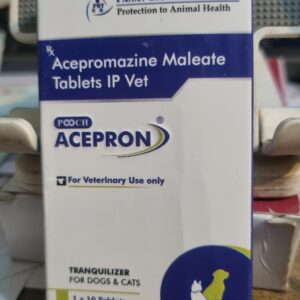You can contact us 24/7 09330372226
₹0.00
Weight Based Shipping. Kindly Check Weight and Delivery location
The best discounts this week
Every week you can find the best discounts here.
Bairo Adult Chicken Vegetable 10 kg Dog Food
Taiyo Maximum Dog Adult Chicken and Liver 500 gm
Taiyo Maximum Dog Adult Chicken and Liver 20 kg
Pooch Acepron Strip of 10 Tablets for Cats and Dogs
Vetricare Respiratory 100 ml for Dogs
Cufwell Cat Drops 30 ml
₹0.00
Weight Based Shipping. Kindly Check Weight and Delivery location
Paws on pause: IIT tackles ‘dog problem’, ban on feeding strays in hostels, designated zones formed
Authored by Prasenjit Dutta,
-Retired Civil Engineer,
-Former Secretary and Founder of Pashupati Animal Welfare Society-PAWS at Barasat, Kolkata
-Proprietor of RKD Pet Shop that supplies pet-use products nationwide.
Comments on the news item published at the following link:
No such enclosure as proposed by IIT KGP in West Bengal is legally acceptable because of statutory stray dog management guidelines by AWBI that clearly says that dogs are territorial animals and live in packs. A single enclosure proposed by IIT for all different packs would lead to deadly clashes with no possible escape or hideout for the individual weaker adversary or a weaker pack. This will lead to regular bloodbath and fight to finish situations within the enclosure. Furthermore, Hon. SC has ordered designated feeding areas and not any enclosure to keep all public spaces dog-free.
It is to be understood very clearly with keen minds that there can be no dog-free area in our country as long as people exercise their national habit of spitting everywhere and littering all around with food wastes, food wrappers and what not. It is also to be understood that there are hungry mouths all around us and anything thrown away by humans, whether edible or inedible is a matter of curiosity for such mouths. Let’s first become ‘advanced’ enough as a nation. After that we can think of the fictitious dog-free towns and cities like they are supposed to have advanced countries.
What’s likely to happen if IIT KGP rounds up all the campus dogs and incarcerate them in a single enclosure big or small: The question of how big or how small looms large.
- This would lead to increase of pestilence in every part of the campus where there will be no dogs. To be remembered that, disease is never far behind pestilence!
- Very soon, within a month the vacuum created by the rounded up dogs would become visible in the ‘dog density maps’ within the minds of dogs outside the campus. Who will prevent their ingress? Would IIT be able to increase the enclosure area continuously to accommodate all those so to say illegal immigrants from far away villages?
- Since the IIT has said pet lovers can enter there to feed if the so desire, has anyone imagined the realistic scenario that is sure to emerge?
- The causal feeders who throw tidbits to some dogs around them actually fill their bellies by 50%. The percentage can vary as per different experiences, but the figure quoted wouldn’t be very far out. None of those feeders would walk that extra mile to trod the long path from their hostel or office to feed those particular dogs that are now inmates in that concentration camp. Even if they do, all the other dogs not getting their favour would eat the favoured dogs alive.
- Serious and routine feeders always feed a certain pack or a certain number of packs. It’s highly unlikely that any single feeder covers all the packs in the vast campus. So, even if they manage to carry their feeding buckets to the gate of the enclosure, the dogs inside would go on a rampage and kill each other trying to get to the bucket before others.
- One may say, okay we can have pack segregation within the enclosure by means of impenetrable inner fences. But then that would be small prisons for each pack that is not desirable at all for their health. Who would clean those small internal enclosures of their faeces? That would be a sure recipe for inviting diseases.
- In a nutshell, putting all dogs into an enclosure will be equal to death sentence. Unfortunately, that’s indirectly what pathological haters of dogs want. They want dogs to just evaporate from the earth. What will they say when rats and monkeys take over the campus and turn life into a horror movie?
IIT has completely misinterpreted the Hon. SC’s Order and just like the 11 Aug 2025 order of SC that ordered dog-free Delhi NCR by putting all of them into pounds, they are now planning to make the campus dog-free by putting them all into one enclosure,
The only solution to keep dogs away is to HAVE dogs that are made harmless through vaccination, sterilization and compassionate feeding. That’s the intelligent way of picking a thorn with a thorn.
In parallel, there must be a serious and compulsory counseling of cynophobic people in how to behave around dogs. Dogs can sense tensions, fears and hatred coming from individual humans because the scent of humans change when they have such feelings. That’s when dogs get agitated– some run away in fear, the bolder ones charge with growls and snarls. Such acts of aggression do not necessarily cause a bite. A bite is invited by reactions of people. It’s well known to all animal behavioral experts worldwide that a dog never shows remorse after biting. When he bites, he thinks he’s done the right thing. So, we humans must realize what wrong did we do and what invited the bite.
Dogs have lived within human habitats and around humans through 10,000 years of human civilization and they themselves have been on this earth for another 10,000 years prior to be that. The question is, who owns the earth more? They or us?
It’s important to make the highly educated neo-Nazis of India realize that their education is of no use unless they develop Indian religious and cultural values of tolerance to coexist with the animal world and leave room for them to exist.
Selective Cynophobia is the most common of maladies observed in educated Indians of ‘India Shining’ or ‘Vikasit Bharat’. My experience with dealing with man-dog conflicts indicate that Cynophobia in the Indian context is ‘Fear of Indian Dogs that are mostly ownerless’. At least 50% of those cynophobics actually love or somehow tolerate foreign breed dogs although those same breeds live abroad as stray (Called Community Dogs in those first world countries). This dichotomy must be officially realized and innovative steps should be taken to salvage the nuisance image of Indian dogs.
To summarize, the only road map towards a sustainable solution is to inculcate the idea of Community Dogs in ‘educated’ minds. But that’s the most uphill task, because the educated people in India do not want to learn anything more. They know it all. The authoritative hammer must be banged loud to make them learn.







3 thoughts on “Paws on pause: IIT tackles ‘dog problem’, ban on feeding strays in hostels, designated zones formed”
dulali.nag@gmail.com
Very exhaustive and enlightening article. What IIT KGP is planning to do is an implementation of the initial order of the SC. I wonder how the state government is allowing it to happen??
Implementation yes, but by catching the wrong end of a red hot rod. The State Govt cannot know of this as yet, because the news media has captured it at the proposal stage before any official order has been passed. Probably the plan is for an under cover operation during the Puja Vacation when all of the members of IIT KGP Animal Welfare Association would be gone.